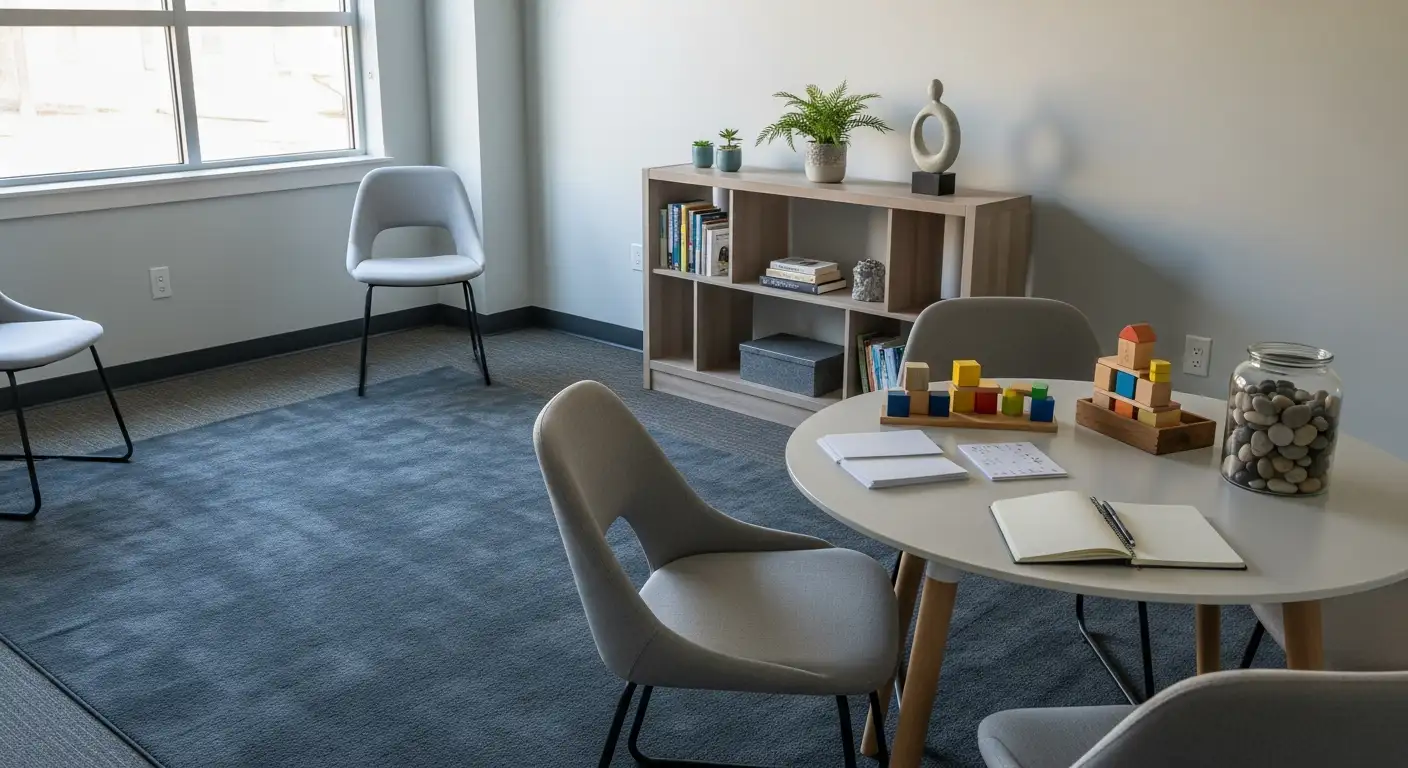Understanding Transitions and ABA Therapy
Transitions and changes can often be challenging moments for children with autism, frequently leading to stress and behavioral disruptions. Applied Behavior Analysis (ABA) therapy offers a comprehensive and evidence-based approach to managing these periods effectively. By utilizing structured techniques and supportive tools, ABA therapy not only eases transitions but also builds skills for greater independence and emotional regulation. This article explores the foundational principles of ABA, its role in helping children with autism navigate transitions, and practical strategies to implement these techniques successfully.
Foundations of ABA Therapy and Its Role in Supporting Transitions
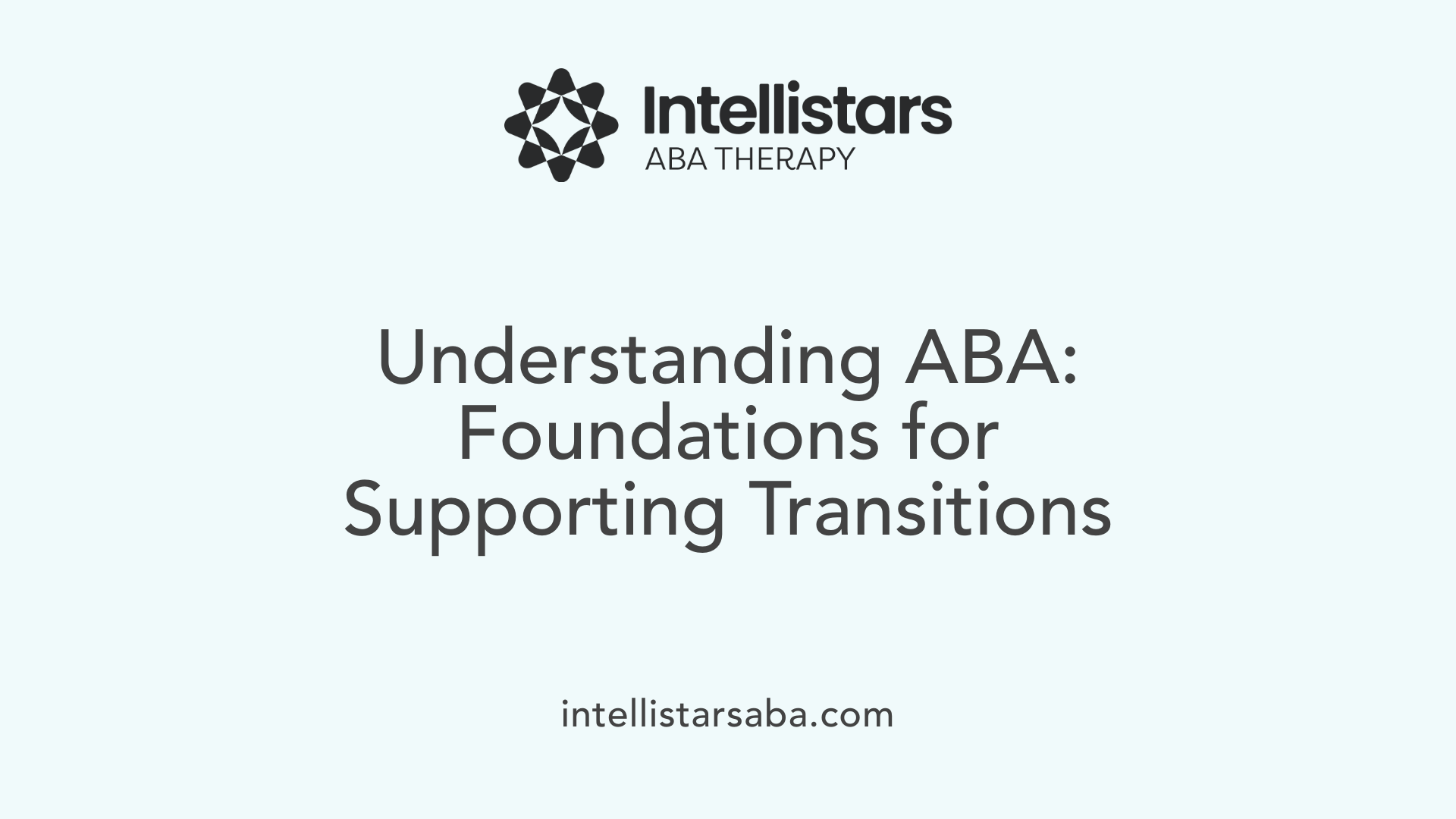
What is Applied Behavior Analysis (ABA) therapy?
Applied Behavior Analysis (ABA) therapy is a scientifically supported approach that improves behaviors and skills, especially in individuals with autism. It analyzes behavior through the ABC model—Antecedent, Behavior, Consequence—to understand how environmental factors impact actions. ABA uses structured teaching methods like Discrete Trial Training (DTT) and positive reinforcement to encourage beneficial behaviors. These programs are tailored by professionals such as board-certified behavior analysts (BCBAs) to focus on specific goals in communication, social skills, and self-care.
How does ABA therapy help individuals with autism?
ABA therapy helps by promoting positive behavior changes and reducing challenging behaviors. It breaks complex skills into manageable steps and uses rewards to motivate learning. Early and intensive intervention supports better language use, social integration, and independent living. By focusing on the individual’s needs, ABA enhances their ability to function in daily life.
Key techniques used in ABA that aid transitions
Several ABA techniques are especially helpful during transitions:
- Positive Reinforcement: Rewarding successful transitions motivates children to cooperate.
- Task Breakdown: Small, achievable steps make transitions less overwhelming.
- Visual Supports: Schedules and first-then boards clearly show what comes next.
- Timers and Countdown Warnings: These create predictability and prepare children mentally.
- Practicing Transitions: Role-playing during calm moments builds familiarity and reduces stress.
- Providing Choices: Allowing children to select activities fosters control and cooperation.
- Consistent Routines: Predictable environments minimize anxiety during changes.
This structured and individualized approach in ABA therapy creates smooth, anxiety-reduced transitions, helping children with autism adapt confidently to daily changes.
Practical ABA Techniques to Facilitate Smooth Transitions
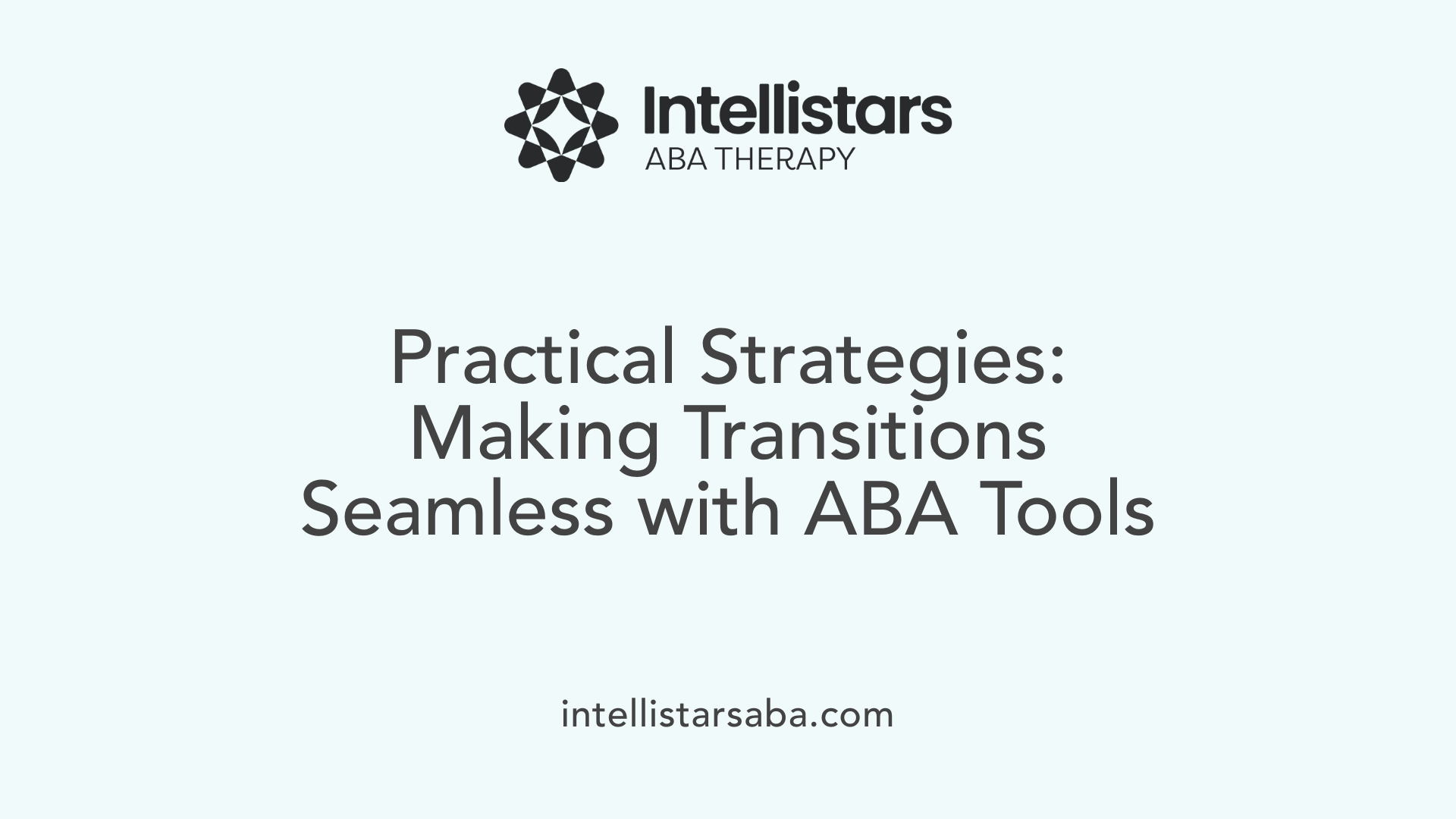
Visual supports: schedules, first-then boards, and all-done buckets
Visual supports are foundational tools in ABA therapy to ease transitions for children with autism. Visual schedules using pictures or icons clearly outline the sequence of daily activities, allowing children to anticipate what comes next. First-then boards link two activities in a predictable order, helping children understand and prepare for transitions by clarifying expectations. All-done buckets provide a simple, independent way for children to indicate the completion of a task or activity, which reduces stress and resistance during changes.
Use of timers and countdowns
Timers and countdown charts are effective ABA tools that create predictability around transitions. By signaling the end of an activity, timers prepare the child mentally and emotionally for upcoming changes. Countdown warnings, such as star charts that count down time visually, further ease anxiety by allowing children to see how much time remains before transition. Together, these tools foster routine and help children understand that transitions follow a clear, consistent pattern.
Positive reinforcement during transitions
Positive reinforcement is a central ABA technique used to encourage successful transitions. Offering praise, rewards, or preferred activities immediately after a smooth transition motivates children to cooperate and develop positive associations with change. This reinforcement approach supports building a child's confidence and willingness to participate in different activities, making transitions less stressful over time.
Wait time and teaching coping strategies
Allowing wait time during transitions gives children space to calm and regroup, reducing the chance of meltdowns. ABA therapy also incorporates teaching coping skills like deep breathing and using sensory tools or calm spaces to help manage stress associated with transitions. Practicing transitions during calm periods through role-playing or rehearsing routines further builds familiarity and trust. These strategies work together to enhance emotional regulation and ease the shift from one activity to another.
Common ABA techniques used
ABA therapy uses several interrelated techniques beyond those directly tied to transitions. These include discrete trial training (DTT), modeling, prompting and fading, and data collection frameworks like the Antecedent-Behavior-Consequence model. Behavior chaining, contracts, extinction, and visual aids complement the transition supports by targeting communication and behavioral skill development tailored to each child.
| Technique | Purpose | How It Supports Transitions |
|---|---|---|
| Visual Schedules | Outline activity sequences | Provides predictability and reduces anxiety |
| First-Then Boards | Link activities in clear order | Clarifies expectations and builds patience |
| All-Done Buckets | Child indicates task completion | Encourages independence and reduces resistance |
| Timers & Countdowns | Signal activity end | Creates routine and mental preparation |
| Positive Reinforcement | Rewards desired behavior | Motivates cooperation and builds confidence |
| Wait Time & Coping | Allows calm and teaches stress management | Prevents meltdowns and fosters emotional control |
These strategies, when used consistently and tailored individually, help children with autism transition smoothly across activities and environments.
Supporting Consistency and Predictability Through Structured Routines

Establishing predictable daily routines
Creating consistent daily routines provides children with autism a reliable framework that reduces stress and uncertainty. These predictable patterns help them understand what to expect, making transitions between activities less overwhelming. When routines are stable, children can navigate their day with more confidence and less anxiety.
Visual schedules and social stories
Visual schedules, often using pictures or icons, clearly depict daily events and sequences. This visual representation helps children anticipate upcoming activities, fostering independence during transitions. Social stories complement these schedules by preparing children for new or unfamiliar situations; they explain what will happen, why, and how to respond, reducing anxiety and promoting emotional readiness.
Practice and role-playing transitions
Rehearsing transitions in calm moments through role-playing and routine practice desensitizes children to change. This low-pressure approach builds familiarity and comfort with shifting between activities. Over time, these rehearsals make actual transitions smoother and less stressful.
Benefits of consistent and individualized strategies
Consistency across home, school, and therapy settings ensures that children receive uniform support, which reinforces learning and security. Individualized approaches tailored to each child's needs optimize effectiveness. Strategies like First/Then boards, countdown warnings, and wait mats, combined with positive reinforcement and ABA techniques, empower children to manage transitions with greater ease and confidence.
| Strategy | Description | Benefit |
|---|---|---|
| Predictable Routines | Establishing daily, consistent activity order | Reduces anxiety by providing structure |
| Visual Schedules | Use of pictures/icons to show sequence of events | Promotes understanding and independence |
| Social Stories | Narratives explaining new or challenging situations | Eases anxiety by setting expectations |
| Role-playing Transitions | Practicing shifts between activities during calm times | Builds confidence and reduces stress |
| Individualized ABA Tools | Tailored techniques like positive reinforcement and task breakdowns | Supports smoother transitions |
The Role of Transition Objects and Sensory Supports in Managing Change
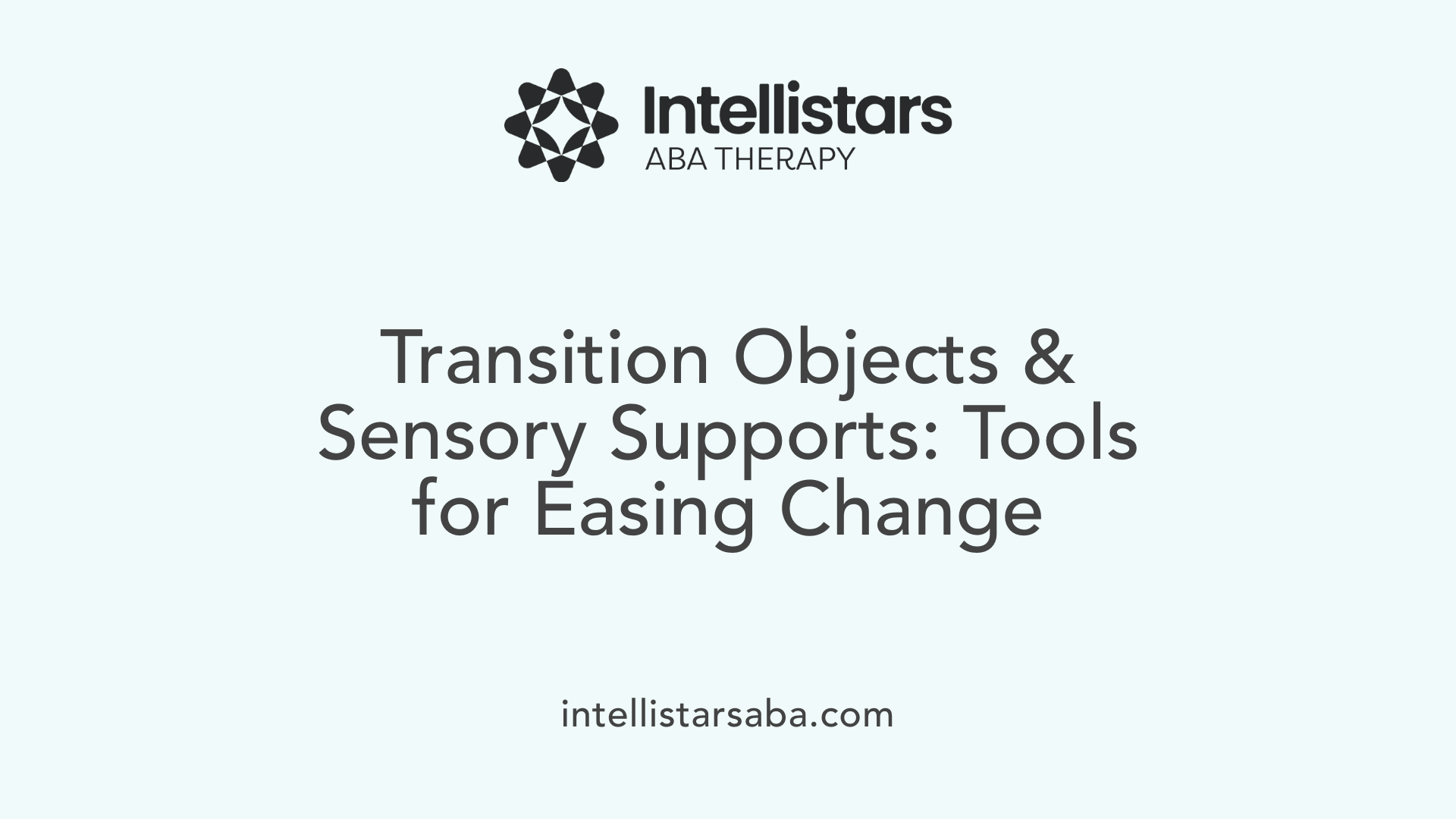
How do transition objects support children during changes?
Transition objects, such as favorite toys, blankets, or personal items, provide children with a sense of comfort and continuity when moving from one activity to another. These familiar items help shift attention away from the stress of change, making the transition feel safer and less overwhelming.
What are wait mats and how do they help?
Wait mats create a defined space for children to pause and manage their attention and belongings. By giving a consistent place to wait, they offer structure and predictability, which reduces anxiety during transitions.
Which coping skills are effective for managing stress in transitions?
Teaching children coping strategies like deep breathing exercises and using sensory tools (such as fidget toys or calming weighted blankets) empowers them to self-regulate emotions during transitions. Calm-down spaces also provide a safe environment for children to regroup when feeling overwhelmed.
Why is gradual exposure to new environments important?
Introducing children to new settings slowly and in manageable steps reduces anxiety by allowing them to adapt at their own pace. This gradual exposure helps children become more comfortable and confident with unfamiliar surroundings, easing future transitions.
Overall, combining transition objects with sensory supports and coping skills creates a supportive environment that helps children with autism manage changes more smoothly and with less distress.
Collaboration and Professional Support for Effective Transition Management
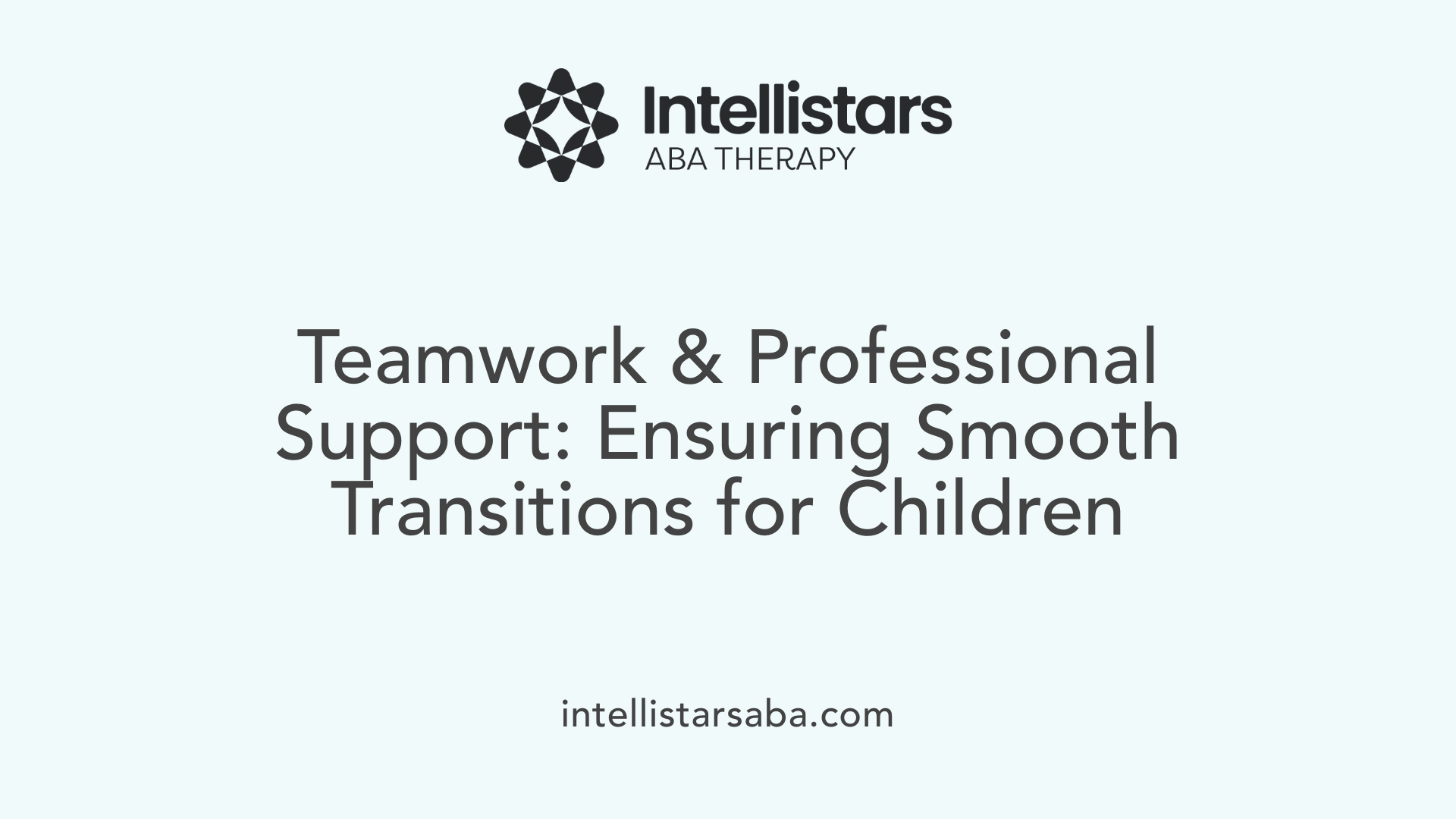
Who provides ABA therapy and what qualifications do they have?
ABA therapy is delivered by a range of qualified professionals including Board Certified Behavior Analysts (BCBAs), associate behavior analysts (BCaBAs), registered behavior technicians (RBTs), and trained paraprofessionals. BCBAs typically hold advanced degrees in behavior analysis or related fields and design individualized treatment plans while overseeing their implementation. RBTs and paraprofessionals carry out daily therapy sessions assisting children directly under supervision. This team-based approach ensures evidence-based interventions rooted in behavioral science, tailored specifically to each child's needs.
Importance of collaboration among parents, educators, and therapists
Effective transition management relies heavily on collaboration among parents, educators, and therapists. Consistent strategies across home, school, and therapy settings create a structured and predictable environment for children with autism. Such teamwork ensures that communication is clear and that transition tools like visual schedules, timers, and countdown warnings are consistently applied. This continuity helps children feel more secure and confident when adapting to changes.
Avoiding coercion: fostering choices and cooperation
Transition support encourages giving children choices rather than using coercion or physical prompts. Allowing children to participate actively in decisions related to transitions fosters cooperation and reduces resistance. Instead of forcing compliance, strategies such as offering wait time, choices in activities, and positive reinforcement empower the child, promoting smoother and less stressful transitions.
Building trust, communication and child empowerment
Trust and open communication form the foundation of effective transition support. By consistently involving children in understanding what comes next and preparing them through social stories or practice sessions, caregivers help build a child's confidence and self-regulation skills. Empowerment through predictable routines, transition warnings, and reinforcement enables children to navigate changes calmly and independently, ultimately improving their overall adjustment and development.
Building Confidence and Independence Through ABA-Supported Transitions
Effectively managing transitions and changes is fundamental to supporting children with autism in their daily lives. ABA therapy offers a scientifically grounded and individualized framework that equips children with the skills needed to face these moments with greater ease and confidence. From the use of visual tools and positive reinforcement to structured routines and collaboration among caregivers and professionals, the strategies covered empower both children and families. With patience and consistency, ABA-based transition management fosters independence, reduces anxiety, and builds resilience, enabling children to engage more fully and comfortably in their environments and activities.
References
- 7 Ways to Encourage A Smoother Transition in Young ...
- 10 Strategies to Ease School Transitions for Children with ...
- Understanding Transitions: How ABA Helps Children Cope
- Autism Transition Strategies: 5 Steps to Smoother Transitions
- Navigating Transitions with Confidence: Helping Children with ...
- Applied Behavior Analysis (ABA)
- Applied Behavior Analysis (ABA)
- 6 Benefits of ABA Therapy for Children with Autism

